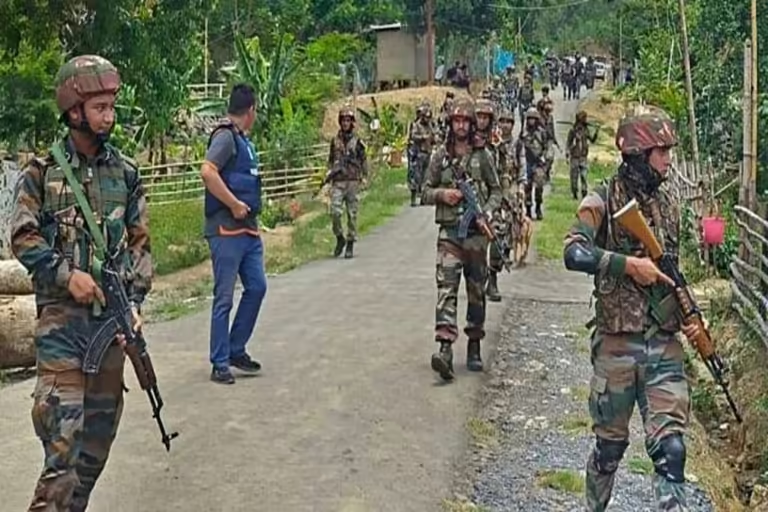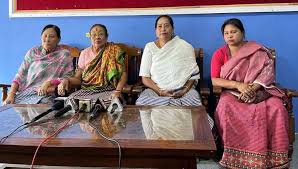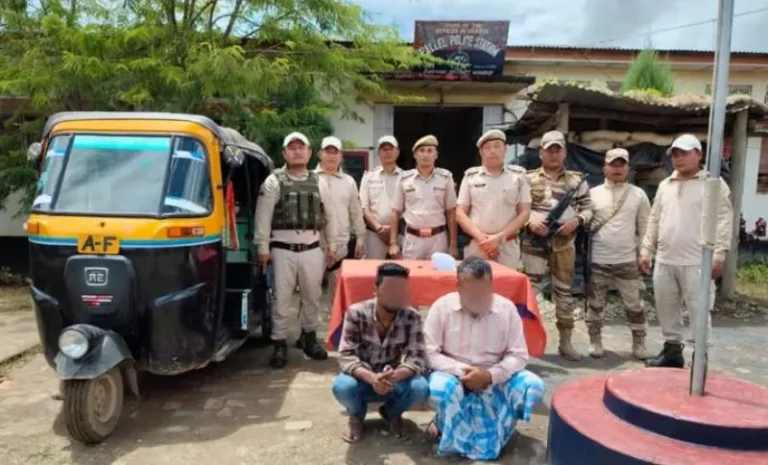President’s Rule Imposed in Manipur: Unpacking the Decision and Its Implications
Summary of the News Article
In a significant political development, the state of Manipur has come under President’s Rule as reported by Northeast Today on February 13, 2025. This move, initiated by the central government, signals a major intervention in the state’s political affairs due to ongoing instability and administrative challenges. The imposition of President’s Rule in Manipur has stirred a range of reactions from political leaders, local communities, and experts, all of whom are closely watching its potential impact on governance, law and order, and the broader socio-political fabric of the region.
The imposition of President’s Rule in Manipur marks a pivotal moment in the state’s modern political history. If you’ve ever wondered how a state’s governance can shift so dramatically, this event provides a perfect case study. Let’s dive into the details, explore what President’s Rule means, understand the underlying reasons behind this move, and discuss its potential impact on the region.
Understanding President’s Rule: What Does It Mean?
President’s Rule is a constitutional provision in India that allows the central government to assume direct control of a state’s administration when the state government is unable to function according to constitutional norms. Think of it like a safety valve that is triggered when local governance falters. When political instability, breakdown of law and order, or a failure in constitutional machinery occurs, President’s Rule steps in to restore normalcy.
Under this rule, the state’s executive authority is temporarily transferred to the Governor, who acts on behalf of the President of India. This means that the local elected government is suspended, and the central government takes charge of policy-making and administration until stability is restored.
The Political Scenario in Manipur: Background and Context
Manipur, nestled in the North Eastern part of India, is known for its rich cultural heritage and diverse ethnic landscape. However, the state has also been no stranger to political turbulence and administrative challenges over the years. Recent events have once again spotlighted the fragility of the state’s political framework, leading to the drastic measure of imposing President’s Rule.
Historical Challenges and Recent Developments
Manipur’s political journey has been a blend of tradition and modernity, marked by periods of rapid development interspersed with bouts of political unrest. Historically, the state has faced challenges such as ethnic conflicts, demands for greater autonomy, and disputes over resource allocation. These issues, if not managed effectively, tend to escalate, affecting both governance and social cohesion.
In the lead-up to the imposition of President’s Rule, reports indicated mounting instability in the state assembly and executive, marked by infighting, allegations of corruption, and a lack of consensus on critical issues. As political deadlock deepened, the central government had little option but to step in to avert a potential administrative crisis.
Why Now? The Triggers Behind the Decision
Several factors converged to push Manipur into the orbit of President’s Rule:
- Political Deadlock: With rival factions unable to agree on forming a stable government, the state’s legislative processes came to a standstill.
- Law and Order Concerns: Rising incidents of violence and public disorder raised alarms about the safety and security of the citizens.
- Administrative Inefficiencies: Key governmental functions were hampered by a lack of coordination and accountability, leading to delays in essential services and policy implementation.
- Public Outcry: Continuous protests and public dissent signaled a deep-rooted crisis in trust between the citizens and their elected representatives.
These triggers created an environment where the state’s administrative machinery was no longer able to function effectively, necessitating the imposition of President’s Rule as a temporary measure to restore order and governance.
Delving Deeper: The Mechanism of President’s Rule in India
To truly understand the magnitude of this decision, it helps to explore the constitutional underpinnings of President’s Rule. The Indian Constitution, through Article 356, provides the framework for this intervention. This article empowers the President of India to assume direct control when the governance in a state breaks down.
How Does It Work?
When President’s Rule is declared:
- Suspension of the State Government: The elected government is suspended, and its powers are transferred to the Governor who acts as the representative of the President.
- Central Oversight: The central government, through appointed administrators, takes charge of state affairs, ensuring continuity in governance.
- Temporary Measure: This is not a permanent solution but a temporary fix, designed to stabilize the situation until normal constitutional processes can be re-established.
- Monitoring and Review: The imposition of President’s Rule is subject to judicial review and periodic assessments by the central government to ensure that it is lifted as soon as the situation improves.
Historical Precedents
President’s Rule has been imposed in several Indian states over the years during times of political instability. While its implementation often sparks debate about central overreach and the erosion of democratic processes, it remains an essential tool in the Indian federal structure to safeguard the nation’s integrity.
The Impact on Governance and Daily Life in Manipur
The immediate effect of President’s Rule is a significant change in the administration of the state. For the people of Manipur, this means a temporary pause in local governance, which can have both positive and negative ramifications.
Restoring Order Amid Chaos
One of the primary objectives of President’s Rule is to restore law and order. With the central government taking charge, there is an expectation of a more coordinated and efficient approach to handling crises. This can lead to:
- Enhanced Security Measures: Increased presence of law enforcement to quell unrest and restore public confidence.
- Streamlined Administration: Central oversight often brings in professional administrators and experts to manage key functions, potentially leading to quicker resolution of administrative bottlenecks.
- Crisis Management: A centralized command can expedite decisions and implement emergency measures more effectively than a fragmented state government.
The Downsides of Central Intervention
However, the imposition of President’s Rule also has its challenges:
- Democratic Deficit: The suspension of the locally elected government can be seen as a setback for democratic representation, leaving citizens feeling disenfranchised.
- Local Disconnect: Administrators from the central government might lack the nuanced understanding of local issues, which can lead to policies that do not fully address the needs of the community.
- Short-term Fix: While effective in the short run, President’s Rule does not address the underlying issues that led to the crisis, potentially delaying long-term solutions.
Political Reactions and Public Sentiment
The announcement of President’s Rule in Manipur has triggered a wave of reactions from various stakeholders across the political spectrum.
Local Political Leaders
Local leaders, who have been at the forefront of the state’s political struggles, have expressed mixed feelings:
- Support for Stability: Some believe that central intervention is necessary to restore calm and provide a breathing space for future political reforms.
- Concerns Over Overreach: Others worry that this move undermines the spirit of local governance and sets a dangerous precedent for central interference in state matters.
The Central Government’s Stance
From the central government’s perspective, the imposition of President’s Rule is a last-resort measure aimed at preserving the integrity of the state machinery. Officials have emphasized that this intervention is temporary and solely intended to bridge the gap until a stable government can be reinstated.
Public Opinion and Media Coverage
For the common citizens, the news has been both alarming and hopeful:
- Relief and Security: Many people, especially those in areas affected by recent unrest, welcome the move as a sign that the situation will be managed more effectively.
- Apprehension and Uncertainty: However, there is also a sense of apprehension about the future of local governance and the potential long-term implications of central control.
Media outlets have been abuzz with debates, op-eds, and expert analyses, discussing the balance between maintaining order and upholding democratic values.
Economic and Social Implications
Beyond the political and administrative changes, President’s Rule in Manipur is likely to have significant economic and social impacts.
Economic Stability and Investor Confidence
Political instability often sends ripples through the economy. When a state is perceived as being in turmoil:
- Business Environment: Investors may become cautious, leading to a slowdown in economic activities.
- Public Services: Disruptions in governance can affect the delivery of essential services like healthcare, education, and infrastructure development.
- Tourism and Trade: Manipur, known for its unique culture and scenic beauty, could see a decline in tourism if the unrest persists.
The central government will need to implement measures to stabilize the economy and reassure both local businesses and external investors that the situation is under control.
Social Cohesion and Community Relations
Manipur’s strength lies in its diverse communities and rich cultural heritage. However, political crises can strain social bonds:
- Ethnic Tensions: Historical issues among various communities might be exacerbated by the centralized imposition of power.
- Community Trust: The trust between the people and their local leaders might take a hit, affecting long-term community relations.
- Public Welfare Programs: Disruptions in governance could delay or hinder the implementation of welfare programs, affecting the everyday lives of citizens.
Restoring social harmony will require not only administrative measures but also a concerted effort to engage with community leaders and stakeholders.
The Role of the Judiciary and Legal Oversight
No matter how necessary or urgent the imposition of President’s Rule might seem, it remains subject to the checks and balances inherent in the Indian constitutional framework.
Judicial Review
The judiciary plays a crucial role in ensuring that the central government’s actions are within constitutional limits:
- Safeguarding Rights: Courts can review the decision to impose President’s Rule to ensure that the rights of the citizens and the principles of federalism are not unduly compromised.
- Timely Interventions: If the measure is deemed to be an overreach, the judiciary has the power to intervene and demand accountability from the central authorities.
Legal Precedents and Future Implications
Historical cases where President’s Rule was challenged in court serve as important precedents. These legal battles remind us that while the central government has the authority to intervene, it must do so with transparency and respect for the democratic process. The outcome of any legal challenges related to this imposition in Manipur will likely influence how similar situations are handled in the future.
Comparative Analysis: President’s Rule Across Indian States
Manipur is not the first state to witness the imposition of President’s Rule, and comparing its situation with other states can offer valuable insights.
Case Studies from the Past
- States in Turmoil: In the past, states like Jammu & Kashmir, Uttar Pradesh, and others have seen President’s Rule imposed during periods of severe political or administrative crisis. In many cases, this move helped restore order, but it also led to debates about democratic accountability.
- Lessons Learned: These historical instances highlight the importance of using President’s Rule as a temporary measure. They underscore the need for comprehensive reforms that address the root causes of instability rather than merely treating the symptoms.
What Sets Manipur Apart?
While there are similarities with previous cases, Manipur’s unique socio-cultural fabric and historical context make its current situation distinct. The challenges here are not only political but also deeply intertwined with ethnic and regional identities. As such, any central intervention must be particularly sensitive to these nuances to avoid further alienation of local communities.
Opportunities for Reforms and Future Governance
Amid the turbulence, there lies an opportunity for meaningful change. The imposition of President’s Rule, though controversial, can serve as a catalyst for reform if leveraged correctly.
Strengthening Democratic Institutions
One of the primary lessons from this crisis is the need to reinforce local democratic institutions:
- Electoral Reforms: Streamlining the electoral process and ensuring fair representation can help restore trust in the system.
- Transparency and Accountability: Implementing robust mechanisms to monitor governance and prevent corruption is vital for long-term stability.
- Empowering Local Leaders: Investing in capacity-building for local leaders and administrators can reduce future dependency on central intervention.
Economic and Social Rejuvenation
Reforms should not be limited to political restructuring; they must also address the economic and social dimensions of the crisis:
- Boosting Local Economy: Initiatives to support local businesses, promote tourism, and encourage sustainable development can help stabilize the economy.
- Community Engagement: Re-establishing trust between the government and the people through open dialogue and inclusive policies is essential.
- Social Welfare: Revamping social welfare programs to ensure they reach the most vulnerable sections of society will be critical in rebuilding community resilience.
Technological Integration in Governance
In today’s digital age, leveraging technology can streamline governance:
- Digital Administration: Implementing e-governance platforms can improve efficiency, transparency, and public participation.
- Data-Driven Decision Making: Utilizing data analytics to monitor administrative performance can help in timely intervention and better resource allocation.
- Communication Channels: Enhancing communication between the central government and local stakeholders through digital means can mitigate misunderstandings and foster collaboration.
Voices from the Ground: Personal Stories and Community Perspectives
While political analyses and constitutional debates form an important part of this narrative, it’s the voices of ordinary people that truly capture the impact of President’s Rule in Manipur.
A Day in the Life
Imagine waking up in a city where uncertainty hangs in the air. Local markets, once bustling with activity, now echo with the cautious whispers of residents. For many, the imposition of President’s Rule is both a relief and a source of anxiety—a relief because authorities promise to restore order, and anxiety because the future of local governance remains unclear.
Local shopkeepers, students, and community elders have shared their stories of how the political crisis has affected their daily lives. Some express hope that the central intervention will bring stability and renewed focus on development. Others, however, fear that the centralization of power may further disconnect decision-makers from the real issues faced on the ground.
Community Initiatives
In times of crisis, communities often band together to support one another. Grassroots initiatives have sprung up across Manipur, aiming to bridge the gap between government policies and local needs. These initiatives—ranging from neighborhood watch groups to community-driven economic programs—highlight the resilience and solidarity of the people of Manipur.
Expert Opinions and Analyses
Political analysts and experts have weighed in on the implications of President’s Rule in Manipur. Their insights provide a balanced view of the potential benefits and pitfalls of this decision.
Pros of Central Intervention
- Stability and Control: Experts acknowledge that a centrally controlled administration can quickly restore law and order, especially in crisis situations.
- Unified Strategy: Centralized decision-making allows for the rapid implementation of policies, which is crucial during emergencies.
- Short-term Relief: For a state mired in political deadlock, President’s Rule can serve as a much-needed respite, offering a window for reform and restructuring.
Cons and Long-Term Concerns
- Erosion of Local Autonomy: Critics argue that frequent reliance on President’s Rule can undermine the democratic process, weakening local governance structures over time.
- Risk of Mismanagement: Without local insights, centrally imposed policies might not fully address regional issues, leading to further complications.
- Temporary Fix: While the measure may provide immediate stability, it does not solve the deep-seated political and socio-economic challenges that have plagued Manipur.
Looking Ahead: What the Future Holds for Manipur
The imposition of President’s Rule in Manipur is undoubtedly a critical juncture. As the state navigates this period of central oversight, several questions remain unanswered:
- How long will the central government maintain direct control?
- What measures will be implemented to ensure that local voices are not permanently silenced?
- How will the state transition back to democratic governance once stability is restored?
A Path Forward
For Manipur to emerge stronger from this crisis, a multi-pronged approach is needed:
- Engagement with Local Leaders: The central government must work closely with community representatives to craft policies that reflect local needs and aspirations.
- Institutional Reforms: Structural reforms that promote transparency, accountability, and efficiency in governance are crucial. These include electoral reforms, better fiscal management, and the decentralization of power.
- Long-term Vision: Beyond crisis management, there must be a long-term plan focused on sustainable development, economic growth, and social cohesion.
Hope and Resilience
History has shown that regions often emerge stronger after periods of crisis. Manipur, with its rich cultural heritage and resilient population, has the potential to turn this challenging phase into an opportunity for transformation. The key will be to ensure that the temporary measure of President’s Rule serves as a springboard for broader reforms rather than a prolonged state of emergency.
Conclusion: Embracing Change Amid Uncertainty
The imposition of President’s Rule in Manipur is a decision laden with both promise and peril. On one hand, it offers the hope of restored stability, efficient administration, and the immediate resolution of a political impasse. On the other, it raises concerns about democratic representation, local autonomy, and the long-term implications of central intervention.
As we observe the unfolding events, one thing remains clear: the situation in Manipur is a stark reminder of the delicate balance between maintaining order and upholding democratic values. While the central government steps in to address immediate challenges, the ultimate goal should be to empower local communities, strengthen democratic institutions, and pave the way for a future where every voice in Manipur is heard.
For residents, political leaders, and policymakers alike, this period of President’s Rule is both a test and an opportunity—a chance to reflect on past shortcomings and build a more resilient and inclusive governance structure for the future.
FAQs
- What is President’s Rule, and why was it imposed in Manipur?
President’s Rule is a constitutional provision that allows the central government to take direct control of a state’s administration when local governance fails. In Manipur, it was imposed due to political deadlock, administrative inefficiencies, and rising law and order concerns. - How does President’s Rule affect the daily lives of Manipur’s citizens?
The imposition can lead to enhanced security and streamlined administration in the short term. However, it may also cause uncertainty and disconnect among locals who feel that their elected representatives are sidelined. - Will President’s Rule be a permanent solution for Manipur’s political issues?
No, President’s Rule is intended as a temporary measure to stabilize the situation until a viable, democratically elected government can be restored. - What are the potential benefits of having central oversight during this crisis?
Central oversight can bring in professional administrators, enforce law and order, and implement policies swiftly, which may help restore stability and create a foundation for long-term reforms. - How can Manipur transition back to local self-governance once stability is achieved?
A successful transition will require comprehensive electoral reforms, active engagement with local leaders, and the implementation of policies that prioritize transparency, accountability, and community participation.





